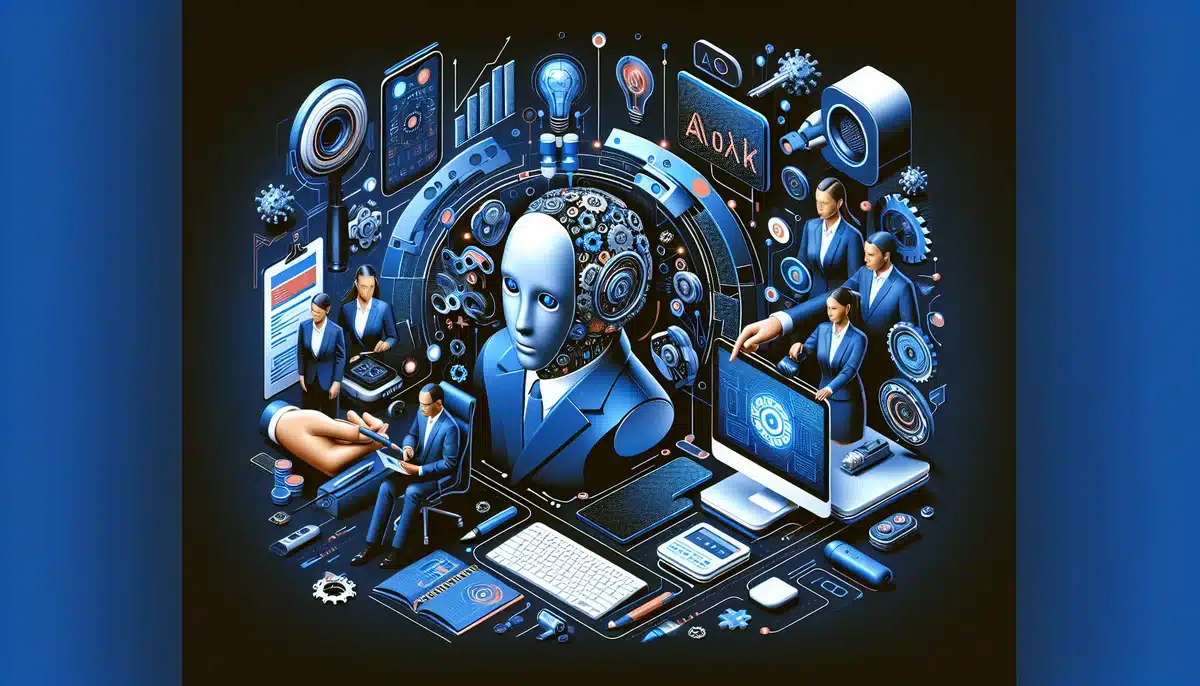
When AI Meets Web Design: Rethinking Tech Company UX
When AI Meets Web Design: Rethinking Tech Company UX
The intersection of artificial intelligence (AI) and web design represents a transformative shift in how tech companies approach user experience (UX). As entrepreneurs, understanding this evolution is critical to staying competitive in a rapidly changing digital landscape. The integration of AI into web design not only optimises user interfaces but also personalises customer interactions in unprecedented ways.
The Role of AI in Modern Web Design
AI is increasingly becoming a cornerstone in modern web design, offering tools that optimise both aesthetic appeal and functionality. For tech companies, AI’s ability to analyse vast datasets enables the creation of websites that are not only visually engaging but also functionally superior. By leveraging machine learning algorithms, companies can tailor their websites to meet user preferences, enhancing the overall UX. This ability to personalise user interaction is critical in retaining customer interest and improving conversion rates. Furthermore, AI-driven analytics provide insights into user behaviour, allowing for continuous improvement of the web interface. Why ‘99.9% Uptime’ Claims Mislead Entrepreneurs
Personalisation and User Engagement
Personalisation is a key benefit of integrating AI into web design, driving deeper user engagement and satisfaction. AI systems can analyse user data to present customised content, recommendations, and interfaces that resonate with individual preferences. This level of personalisation is crucial for tech companies aiming to differentiate themselves in a crowded marketplace. Moreover, AI can anticipate user needs, streamlining navigation and reducing the time users spend searching for information. Such enhancements not only improve user satisfaction but also increase the likelihood of repeat visits and brand loyalty.

Professional illustration for When AI Meets Web Design: Rethinking Tech Company UX
AI and Responsive Design
Responsive design is another area where AI is making significant contributions, ensuring websites function seamlessly across various devices. AI algorithms can dynamically adapt web layouts based on device specifications, user behaviour, and real-time interactions. This adaptability is essential for tech companies as it ensures a consistent user experience across desktops, tablets, and smartphones. Moreover, AI can optimise load times and the overall performance of websites, crucial factors in maintaining user interest and reducing bounce rates. By automating these processes, AI reduces the manual labour involved in traditional web design, allowing for more efficient resource allocation.
Challenges and Ethical Considerations
Despite the benefits, integrating AI into web design presents challenges and ethical dilemmas that tech companies must address. The reliance on user data for personalisation raises privacy concerns, necessitating robust data protection measures. Entrepreneurs must navigate these challenges to maintain user trust whilst complying with legal frameworks like the General Data Protection Regulation (GDPR). Additionally, there is the issue of algorithmic bias, which can result in unintended discrimination if not properly managed. Companies must ensure their AI systems are transparent and regularly audited to prevent such biases, maintaining ethical standards in their operations. Warum die Benutzererfahrung den PageSpeed-Score übertrifft
Future Trends in AI and Web Design
Looking towards the future, AI will continue to play an integral role in shaping web design trends, with several developments on the horizon. The use of voice-activated interfaces is expected to increase, driven by advancements in natural language processing (NLP). This trend will require tech companies to rethink their UX strategies to accommodate voice interactions. Furthermore, AI’s role in enhancing cybersecurity measures will become increasingly important, protecting user data from breaches and cyber threats. The integration of augmented reality (AR) with AI in web design is another emerging trend, offering immersive experiences that engage users in novel ways.
Conclusion: Embracing AI for Competitive Advantage
In conclusion, the synergy between AI and web design offers tech companies a powerful tool for enhancing UX and gaining a competitive advantage. By embracing AI technologies, companies can create more intuitive, personalised, and responsive web experiences that meet the evolving demands of users. However, it is imperative for entrepreneurs to navigate the associated challenges, particularly those related to data privacy and ethical AI deployment. As the digital landscape continues to evolve, staying abreast of AI advancements will be crucial for businesses seeking to maintain relevance and drive growth. Ultimately, the successful integration of AI in web design will be a defining factor in the future success of tech companies.
AI-driven web design is not just about aesthetics; it’s about creating meaningful interactions that drive business growth.
- AI enables data-driven personalisation.
- Responsive design is enhanced by AI adaptability.
- Ethical considerations are crucial in AI deployment.
- Future trends include voice interfaces and AR integration.
Date of writing: 23/10/2023 The 15 best tech website examples in 2025
